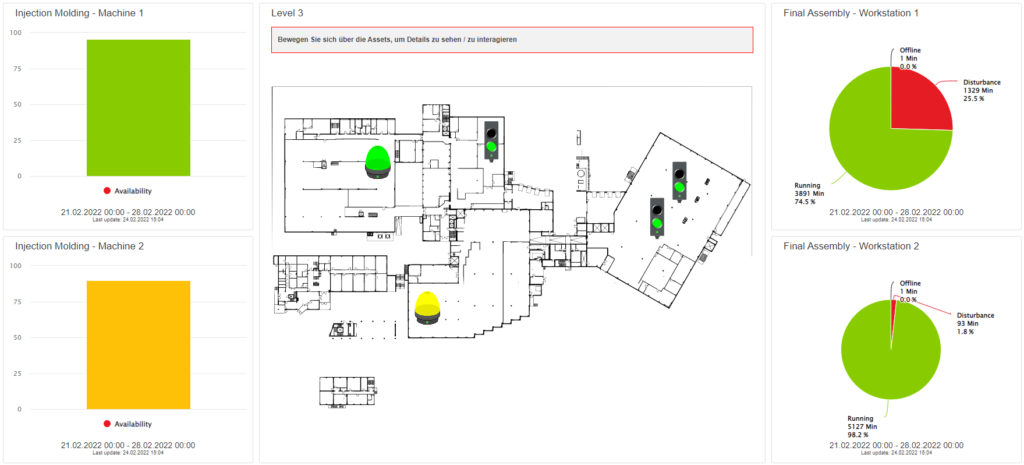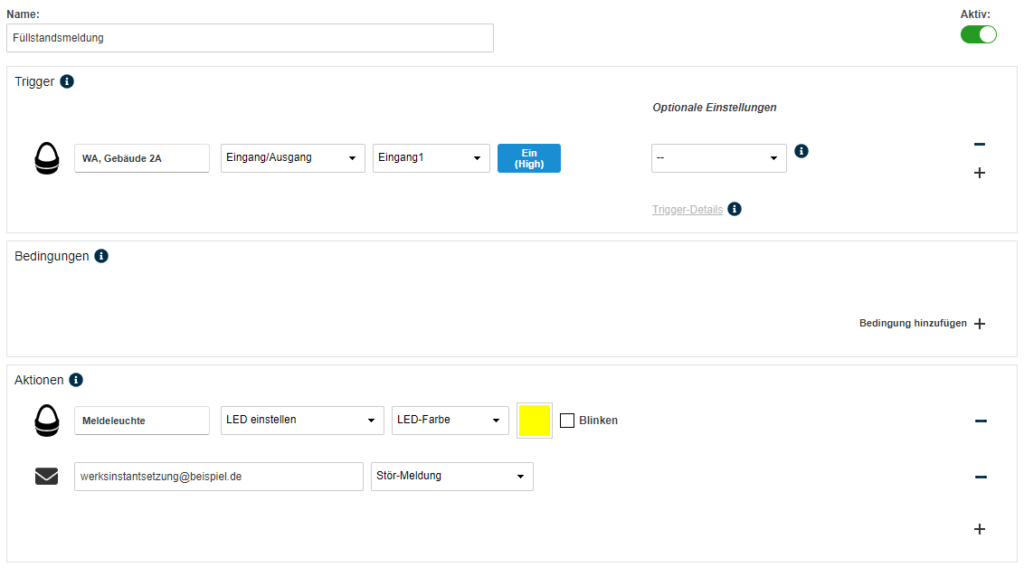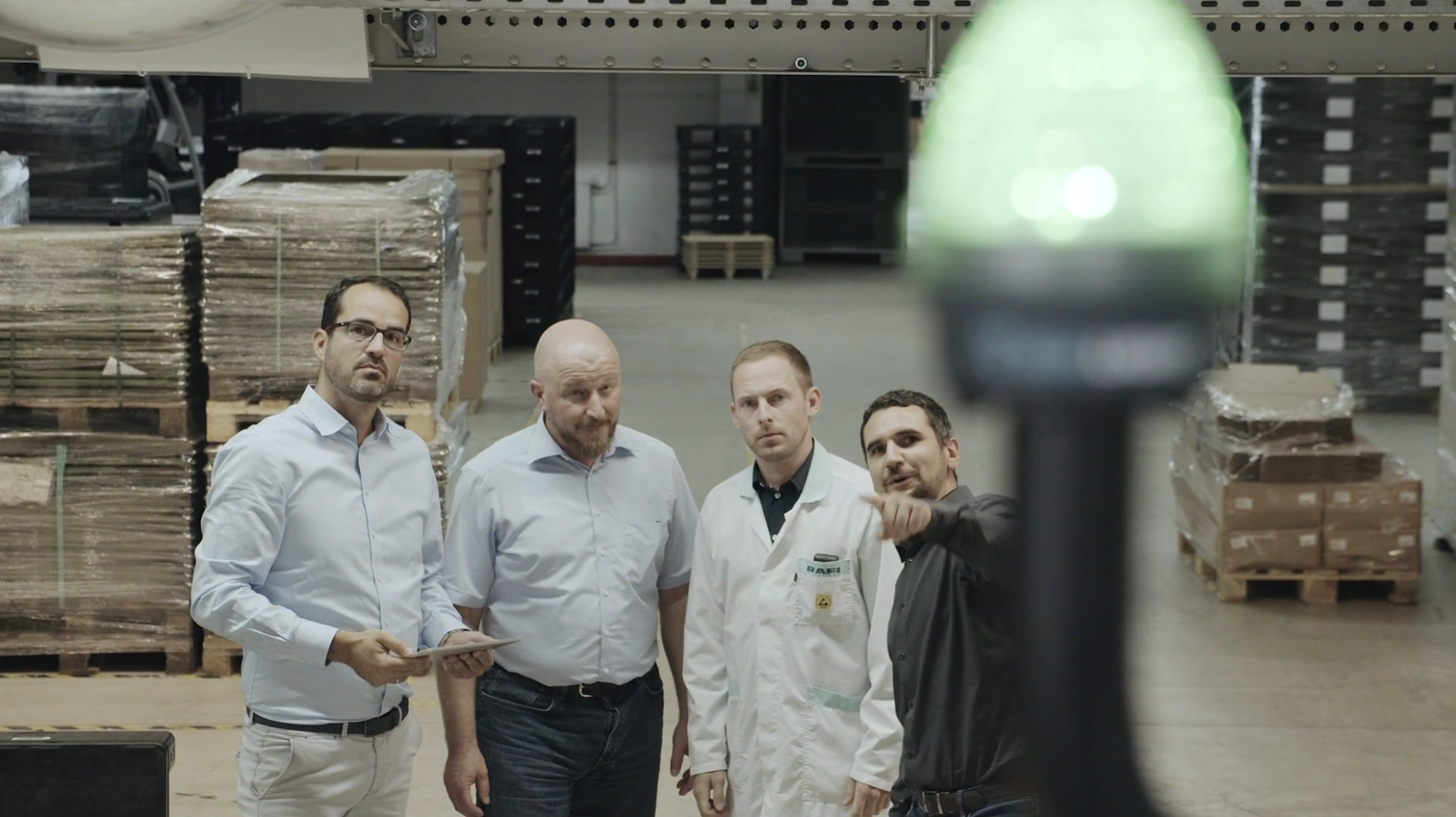Try our KIS.ME Starterkit for only EUR 499 – order now!
WOULD YOU LIKE YOUR BUILDING TECHNOLOGY TO HAVE HIGHER AVAILABILITY?
BUILDING TECHNOLOGY WITH KIS.ME
THE SIMPLE RETROFIT SOLUTION FOR DIGITAL INSIGHT
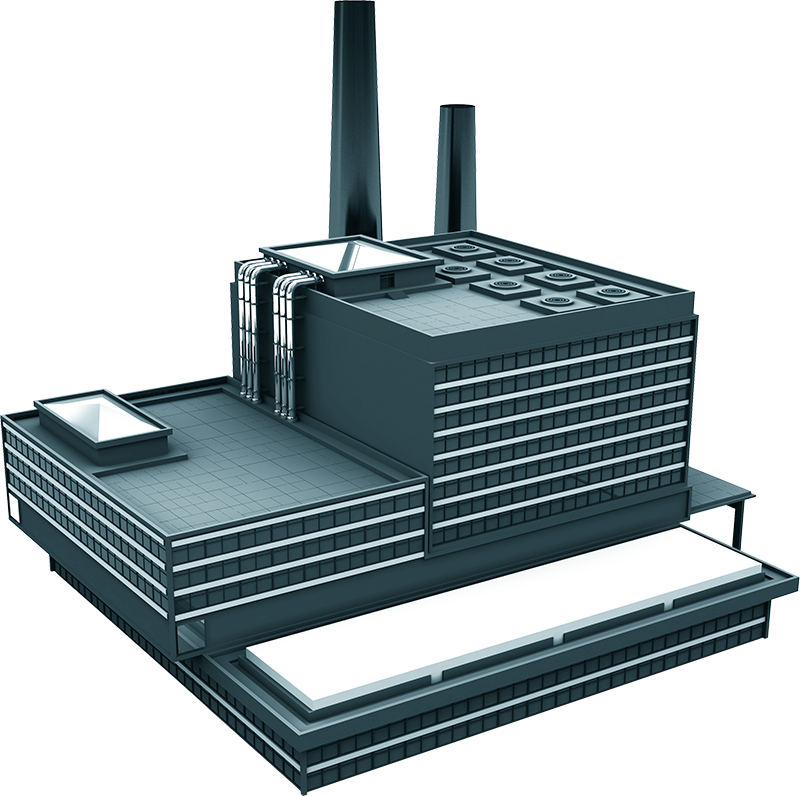
THE TASK
WANTED: RETROFITTING IN JUST A FEW STEPS
Building technology is the part of a business that should just operate unobtrusively in the background. You only really notice it when there is suddenly a lack of compressed air in the value-adding processes, when the heating, air conditioning and ventilation system in the buildings is no longer functioning properly, when the separator tanks are full and so on.
The plants that are supposed to ensure optimal process conditions are very often ones that have reached a certain age. These plants do not necessarily have what is required to be connected to a digital building management system in a manner that would make sense economically. But how can the managers be made aware that there is a problem at one of these plants, especially when they are in such remote locations?
THE SOLUTION
INCREASED AVAILABILITY OF PLANTS – THROUGH TRANSPARENCY AND TIMELY ALERTING. SMART, DIGITAL AND SIMPLE WITH KIS.ME
The KIS.devices have digital inputs and outputs. This allows them to be connected to machines and sensors. Since the devices are WLAN-capable, no additional routing of cables is necessary. The incoming data is sent to the KIS.MANAGER via the WLAN connection. The data can now be conveniently received and processed on the KIS.MANAGER web platform – with an Internet-enabled device that can be located anywhere.
The plant manager now decides what happens to the data in the KIS.MANAGER.
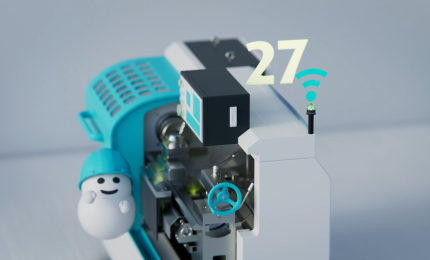
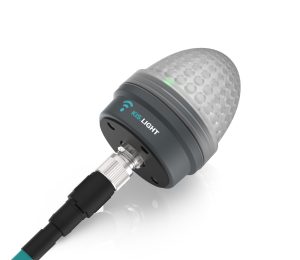
PREVENTING PRODUCTION DOWNTIME THROUGH CLEVER NETWORKING
EXAMPLE 1: PROCESSING INFORMATION ABOUT A FAULT
A water treatment plant located in the basement has a problem and shuts down. This machine state causes a signal to be sent to a digital input of a KIS.LIGHT. The KIS.LIGHT immediately transmits the signal to the KIS.MANAGER via WLAN. In this case, the plant manager has already determined what this signal should trigger. For example, the plant manager may have chosen to receive an automated e-mail. In addition, a visual signal is sent to a second KIS.LIGHT in the office to make the fault known as efficiently as possible.
Result: Ideally, the fault can be remedied before the missing medium is noticed in the value-adding processes, leading to production downtime.
In addition to information in acute cases, KIS.MANAGER offers the plant manager the option to keep an eye on plant states using digital twins and digital building maps. These states can also be evaluated and represented in clear diagrams.
EFFICIENCY OPTIMISATION THROUGH DIGITAL TRANSFORMATION
EXAMPLE 2: LEVEL MONITORING
The condensate tank of an air dehumidification plant fills up in cycles that are highly irregular, as the quantity that drips into it depends on the amount of water in the air. A retrofitted fill level sensor sends a signal to a digital input of a KIS.BOX before the container overflows. In this case, the manager has decided that the KIS.MANAGER is to send an e-mail to a chat in Microsoft Teams. This chat simultaneously informs the entire plant maintenance staff about the fill level of the container. The person who takes care of emptying the container sends a brief message to the others and goes to the container to empty it.
Result: The often unnecessary journey to check the fill level of the container is eliminated.
The information simply goes to where it is needed.
SAVING ENERGY COSTS THANKS TO KIS.ME
EXAMPLE 3: REGULATION
One of the most expensive media in a manufacturing facility is compressed air. For this reason, there is a desire to disconnect workstations, production islands or entire zones that do not require compressed air (at the weekend, after the end of a shift, etc.) from the overall network.
Now, either someone on site can manually close a corresponding tap, or a Wifi-enabled KIS.BOX is mounted at the right places, which controls a solenoid valve via a digital output.
With the KIS.MANAGER web platform, the digital twins of the KIS.BOXes can be placed on a digital building plan. In conjunction with a few uncomplicated rules, the subject is quickly and clearly digitized. Individual workstations, production islands or entire zones can thus be disconnected from the overall network at the touch of a button via the solenoid valve. In addition, the digital twins enable location-independent control of this connection and disconnection via any mobile device. Within the production hall, the building plan provides an overview of which workstations, production islands and zones are currently switched on and which are switched off.
And that pays off! This is because compressed air systems are expensive, often outdated, and in the rarest cases leak-proof and thus unsustainable.
PRACTICAL EXAMPLE IN DETAIL
A PRACTICAL EXAMPLE OF THE REGULATION OF A COMPRESSED AIR SYSTEM IN A PRODUCTION COMPANY WITH KIS.ME
Practical example of a production hall with 2,000 m² and 7 production islands
Cost savings: approx. 6,000 € per year
Investment for KIS.ME
Ongoing charges
Return on Invest (ROI) = 6 months!
Was that insightful?
CAN YOU FIND ANY OF THE EXAMPLES IN YOUR PRODUCTION?
All of the examples demonstrate how it is possible to make considerable improvements with simple measures and very little investment.


